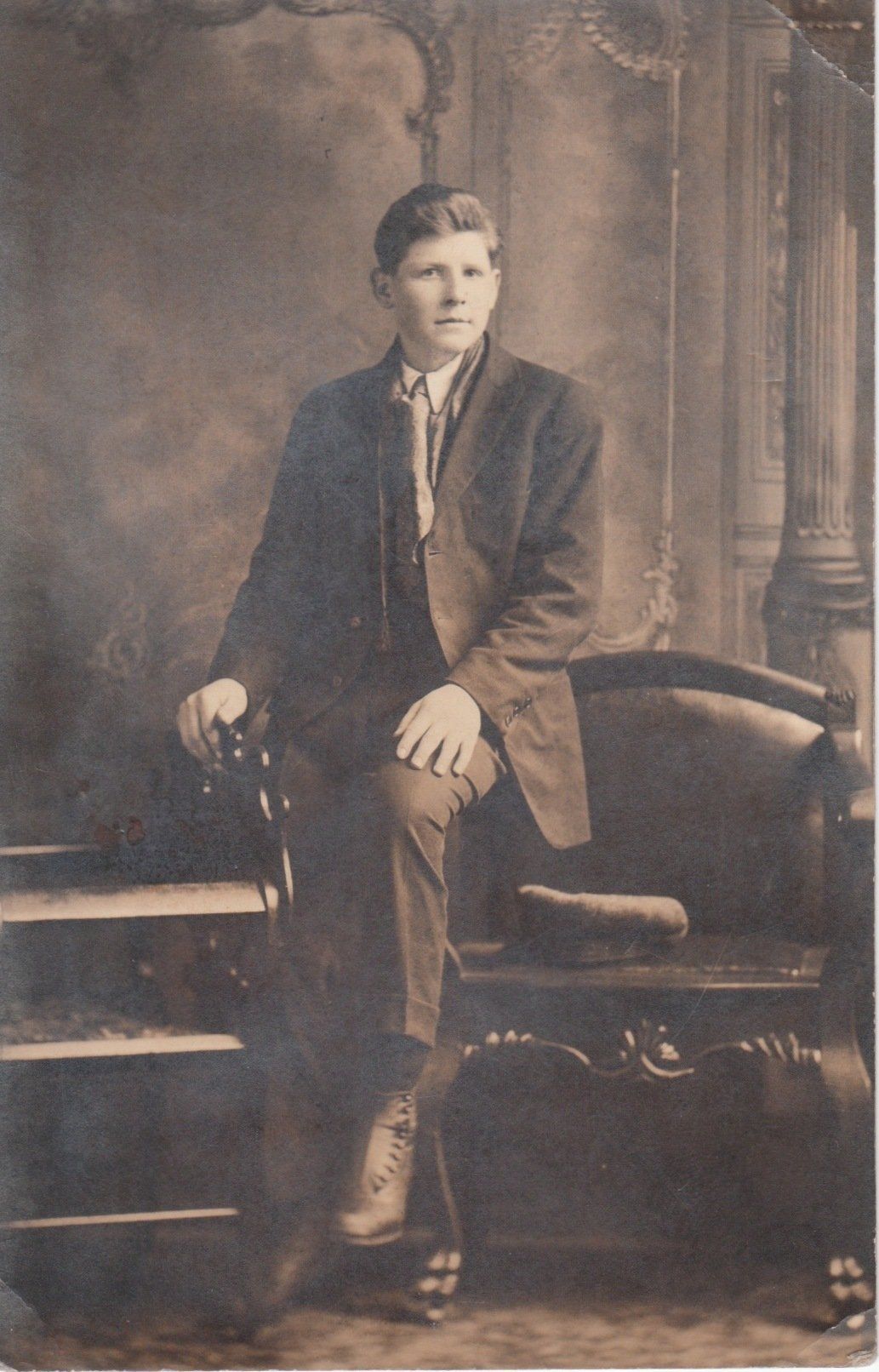Edward Lawrence Forth
by granddaughter Cindy Long
Edward Lawrence Forth was born in Bracebridge, Ontario on February 14, 1903, the ninth of sixteen children born to Henry Ernest Forth and Lucy Ellen Scott.
His curly blond hair gave him a cherubic appearance as a youngster, but the little angel grew into a giant of a man, over six feet tall, remembered by all his grandchildren as a towering, yet gentle figure.
Ed, as he was known, spent his childhood in Bracebridge and Utterson, Ontario where his father worked for the Northern and Pacific Junction Railway (formerly the Grand Trunk Railway). He certainly would have helped with the household chores, and possibly participated in the delivery and sale of baked goods. His mother was an accomplished baker and he could recall that on her baking days, the long oak table in their home was completely filled with bread, and other items.
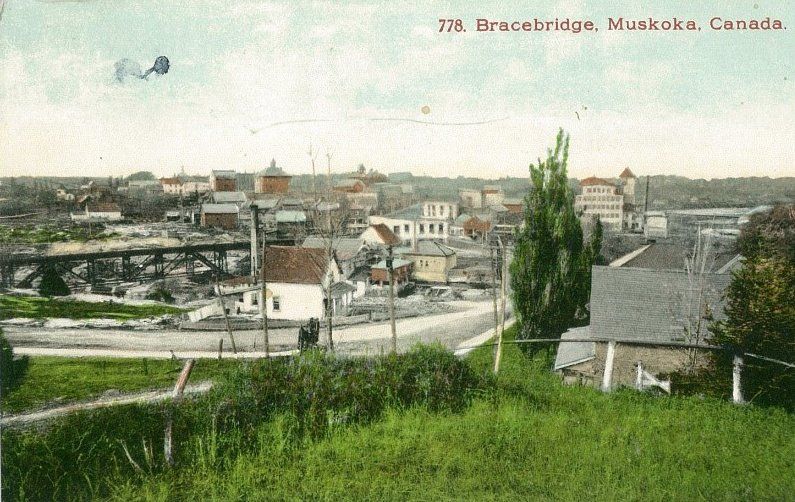
Bracebridge, early 1900’s (From the Muskoka Collection, Bracebridge Public Library)
In 1916, the family moved to Parry Sound, Ontario where his father found employment in one of the explosives plants in Nobel, and Lucy developed a bakery business. Their sons, Harry (Henry Forth Jr.) and Alfred, with the help of their brother, William, began to take over the business after returning from serving overseas in the First World War. In the summer, the boys would rent a boat at Scott Boat Livery, load it up with the baking, and tour around to the various islands in Georgian Bay, peddling their wares to the tourists. In the winter, a horse and sleigh would take them through the town to make their deliveries.
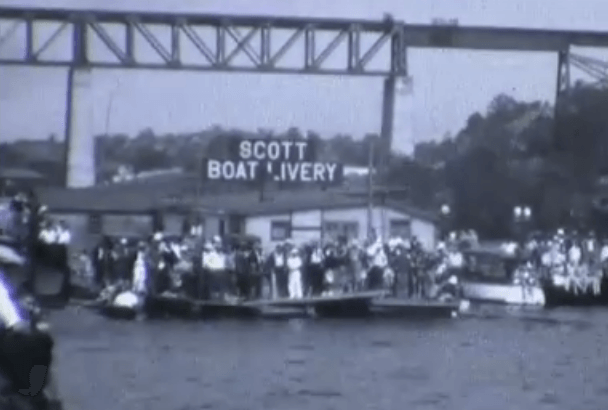
Scott Boat Livery in Parry Sound. Circa 1928
Photo courtesy of Mike Morden
As a teenager, Ed, like his father, worked at one of the munitions factories in Nobel for a while. He recalled walking along the railroad tracks to get there, and because it was such a long walk, they’d stay in Nobel several days, possibly the entire work week, before walking back home. There were two explosives and munitions factories in Nobel in the early part of the twentieth century, and we don’t know which one he worked at. Both closed in 1922, so we can date roughly his time of working there as between 1917 and 1922, as they were unlikely to have hired anyone below the age of fourteen for that work.
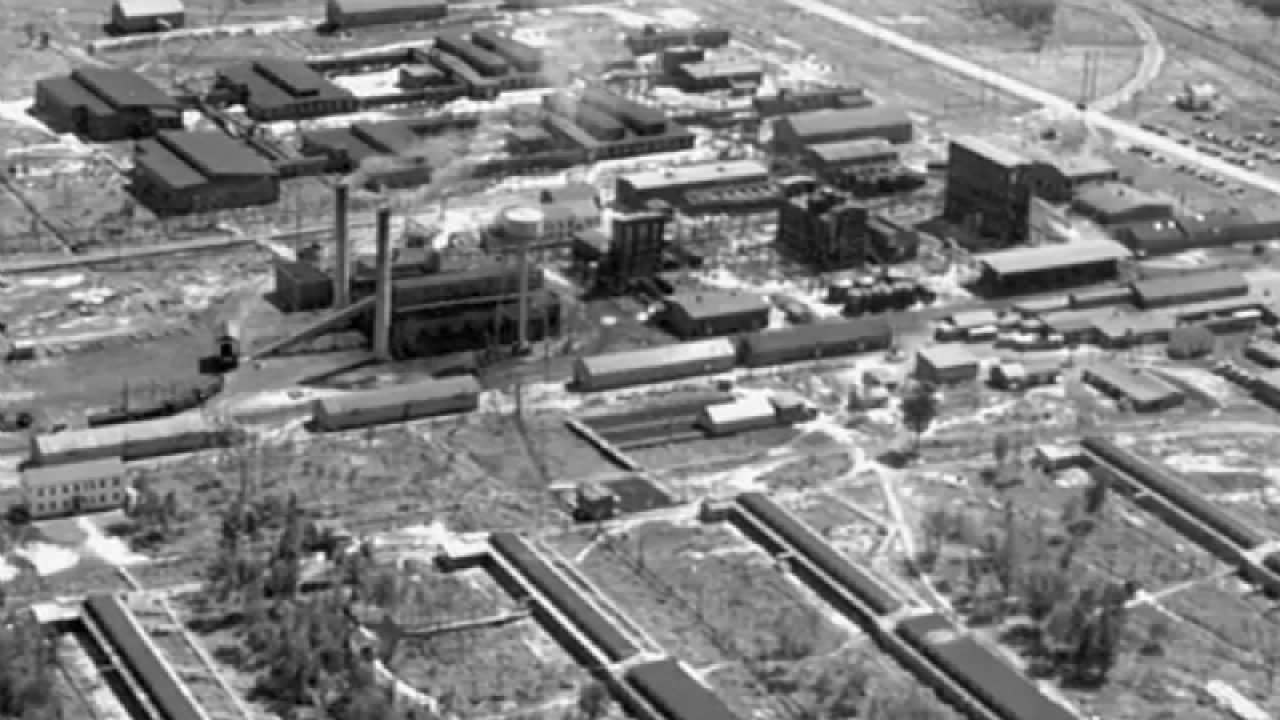
The Canadian Explosives Plant in Nobel, ON, which began employing workers in 1914
Photo by Robert Mercer
Prior to 1928, Ed left Parry Sound and moved to Toronto. We’re not sure of the exact year. Once there, he began working for the Bell Telephone Company, which is where he met his future wife, Frances Gordon, who was working as an operator at the time. Ed was good with electrical equipment and wiring, and he worked in the company’s electrical department until his retirement in 1962.
He also thought it important to be trained in first aid, and took courses through the St. John’s Ambulance organization, eventually becoming a certified trainer. He offered courses at Bell for other employees. This training landed him a role during World War II.
Unlike nearly all of his brothers before him, Ed did not serve in the military during World War I. He was too young, but that didn’t stop him from lying about his age and trying to apply along with his older brother William. William (also lying about his age) was accepted, but because Ed had lost the tip of a finger in an accident at a logging camp, he was rejected for military service. The recruitment officer told him that was his “trigger finger”. Whether the officer had merely recognized his young age and was just being kind, no one can say for certain. (William was discharged the following year after being discovered to be underage for military service.)
Ed's granddaughter, Emily, remembers a little joke he used to play with his grandchildren:
“In his younger days, while working as a lumberjack, he lost two of his fingers, just below the knuckle. He loved to tease me and my friends that he could remove our noses. He would grab my nose, give it a little tug, and then wrap his other hand around his missing finger tops, which at my young age looked just like my nose. I think he laughed the hardest at his practical joke.”
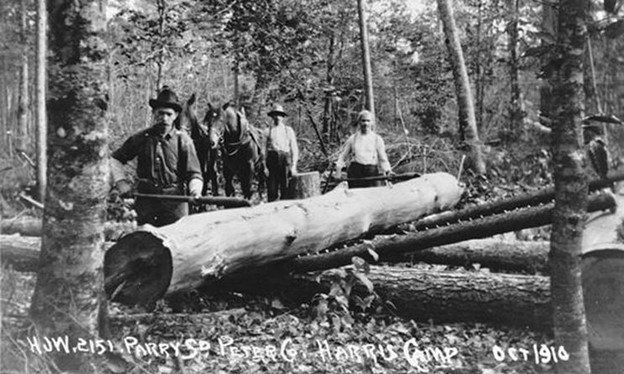
Logging camp near Parry Sound, 1910 (From the Public Archives of Canada) Westwind Forest Stewardship Inc.
Although he didn’t see active service in the First World War, he joined the reserves in WWII when living in Toronto, and his daughter, Barbara, remembers her mother taking the family on a boat trip to Niagara-on-the-Lake to visit him where he was stationed as a medic. He had enough skill that he was the only one his daughter, Barbara, trusted when she accidentally ran into a tree branch and nearly lost her eye.
“We were out in the backyard, playing chase games,” she recalled. “We were hooting and hollering, and I whirled around and a branch from the apple tree smacked me in the face. A twig went right into the corner of my eye. I went running into the house, screaming. My mother tried to get it out, but I wouldn’t let her touch it. I screamed for my father. They had to go find him. He was playing baseball at the time, and someone had to go get him out of the game to come home, where he managed gently to pull the twig out of my eye. It didn’t even bleed. They took me to the hospital anyway, where we were told I was very lucky. Another fraction of an inch and I would have lost the eye.”
Ed’s interest in first aid might have been sparked by his own experiences as a child. Along with losing fingertips, he once had a pea lodged in his nose. He and his friends used to make pea shooters, and when they’d pass the fruit and vegetable stands, they’d scoop a few peas to use as ammunition. One day he complained to his mother that his nose hurt. It appeared red and swollen. She took him to a doctor who discovered that a pea had not only become lodged deep in his nostril, but had sprouted in the warm, moist environment. This incident was used as a cautionary tale for all the grandchildren. Never put anything up your nose was a warning we lived by.
Ed played baseball for the Bell Telephone Team, and he was also an avid bowler. His bowling team won several tournaments, and I remember the bowling trophies sitting on a shelf at the family cottage.
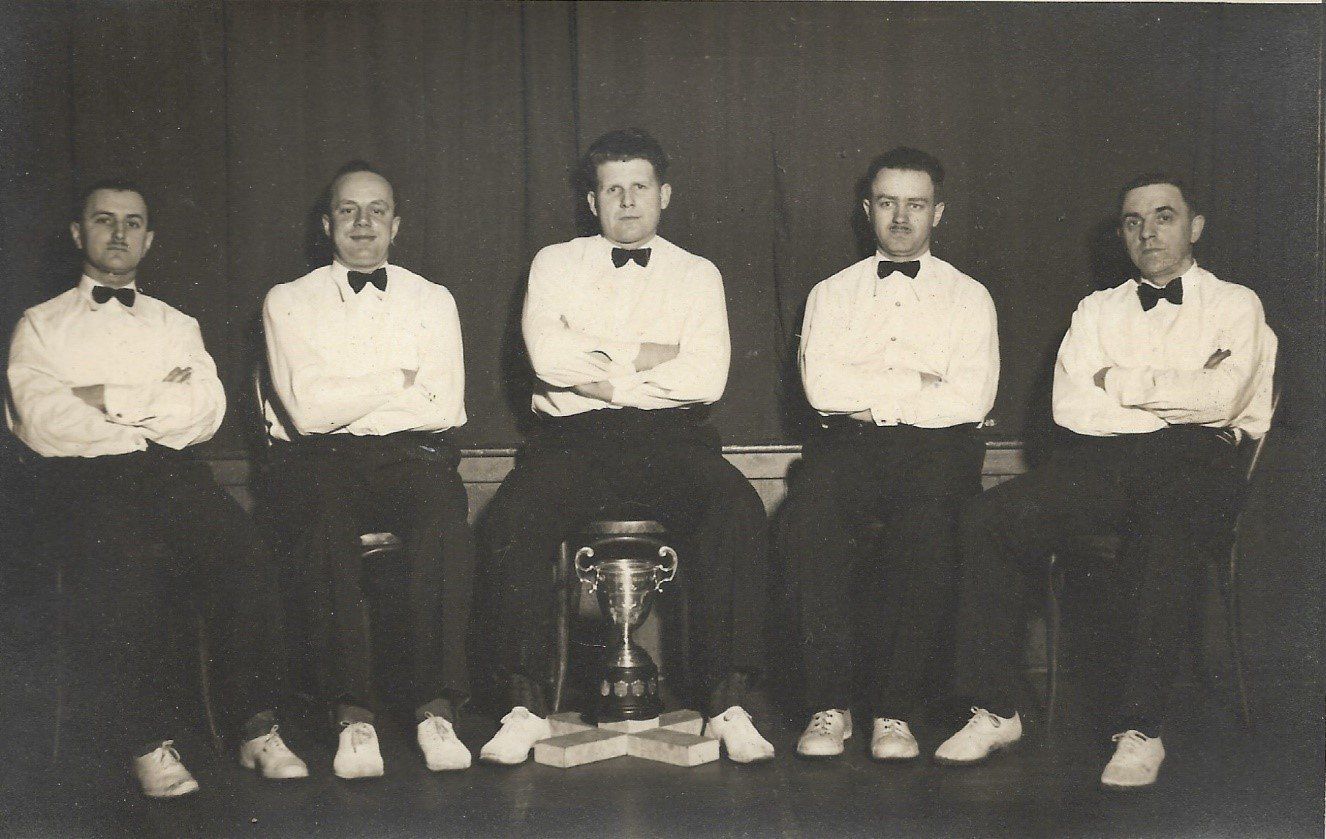
Edward Forth, centre, with his bowling team
Circa 1930
As well as bowling and baseball, Ed coached junior hockey when he first arrived in Toronto, at the former Maple Leaf Gardens on Carlton Street. He also enjoyed Friday night poker games with friends, and would play cards with his grandchildren, too.
Emily: “Rummy was his card game, and he was a very patient teacher. Oh sure, he let me win now and then, but he mostly won, which taught me to be a gracious loser. Besides if I put up too much of a fuss, he let me know we would not be playing again.”
Henry and Lucy had raised their children in the Baptist church community in Bracebridge, and although Ed was leader of a prayer group there, he did not maintain his religious ties to that community after moving to Toronto. His daughters remember attending Sunday School at Broadview United Church, and most families at the time considered themselves to be part of one church denomination or another, but the family was not particularly religious. Ed told his three daughters that, as regarded religion, they were free to decide for themselves.
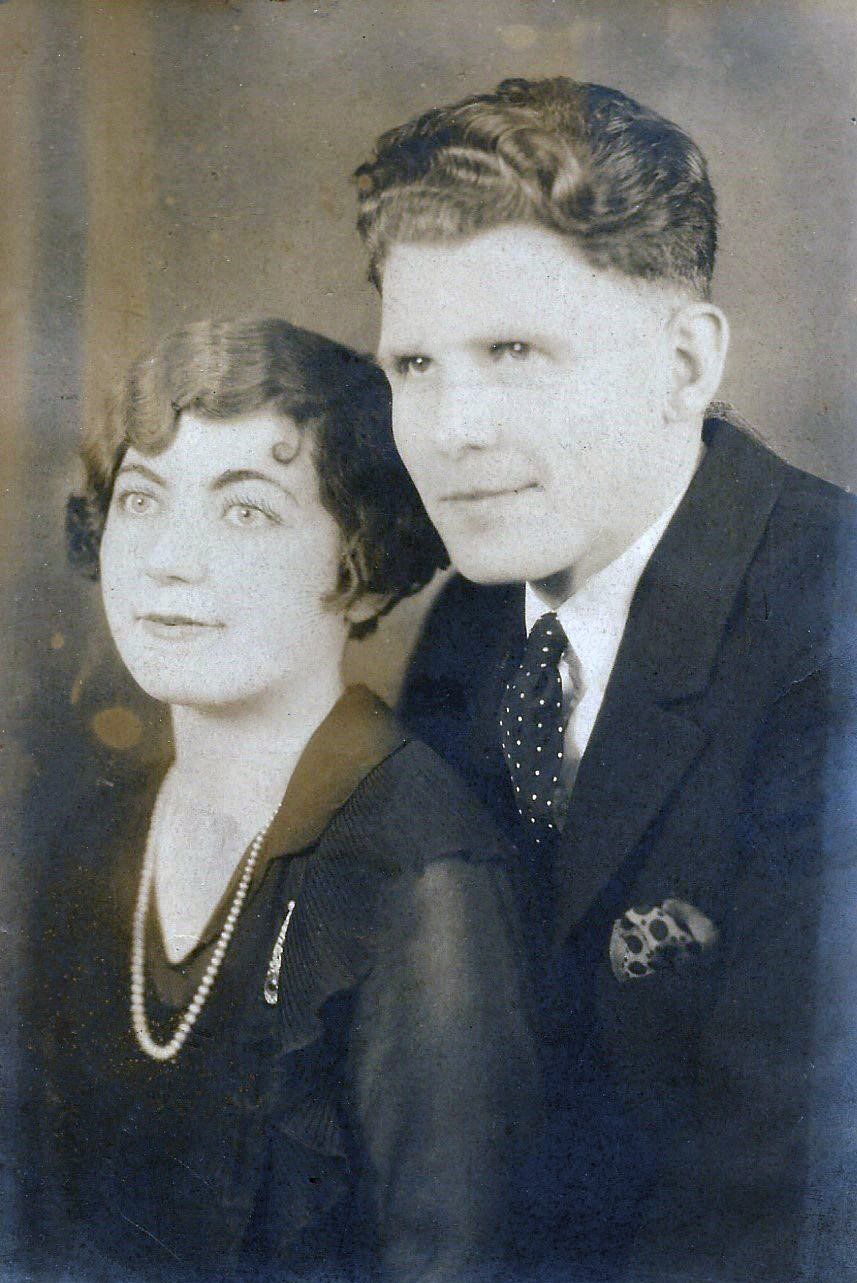
Ed and Frances were engaged on his birthday, Valentine’s Day, in 1928, and they married on June 16, 1928, at St. John’s Anglican Church Norway at the corner of Kingston Road and Woodbine Avenue in Toronto.
Edward Forth and Frances Gordon had three daughters: Irene (May 14, 1929 – Dec. 9, 2018), Barbara (b. Mar. 21, 1933), and Lois (Dec. 30, 1934 - Jul. 28, 2021).
All three daughters worked for the Bell Telephone Company at various points in their lives. Ed loved his three girls and was a devoted family man and father.
The family had at least three addresses while living in Toronto. Ed and Frances’ first home was on Haslett Street, not far from Woodbine and Kingston. They later moved to Albemarle Avenue in the Riverdale neighbourhood where Ed kept a bountiful and beautiful garden. His daughter, Barbara, recalls that he grew watercress on the shady side of the garage, and corn in the back lane behind it, with raspberry bushes on the other sunny side. Along with those, he grew a variety of vegetables and flowers, and had a large “Victory Garden” during the years of World War II.

Edward Forth with his youngest daughter, Lois, at her grade eight graduation in 1948.
One of Ed’s sisters, Edna, had a large tomato garden northeast of Toronto, in Ravenshoe, Ontario. One year, an enormous storm was expected late in the harvest season. Ed loaded up the family in the car, and they headed to what was basically a small farm to help the family get the tomatoes in before the storm hit. His daughter, Barbara, remembers friends, neighbours, and family, including the children, gathering bushels of tomatoes. As they worked well into the darkness, Ed used his electrical know-how to string up a set of lights by which they could keep working.
By the 1950’s the family had moved to a newer Toronto suburb known as Parkview Hills, close to St. Clair and O’Connor in what was then the borough of East York.
Our grandmother often told the story of how, one evening, they headed up to O’Connor Drive and Eglinton Avenue to get some milk at a small convenience store there. While walking back to their car, a moth lodged itself in Ed’s ear. They had to drive to Toronto East General Hospital (now Michael Garron Hospital) to have it removed and she recalled how the fluttering in his ear nearly drove him insane on the short trip to the hospital.
In 1961, Ed built a retirement home for himself and Frances in Callander Bay, Ontario, not far from North Bay. His brother, William, already owned some land on the bay and had established “Green Road Cottages”, which are still there to this day, under different ownership, as Greenroad Cottages and Trailer Court. Ed built it all, from foundation to roof, and he did all the electrical and plumbing installations himself. They christened the cottage
Bentwillo, a clever amalgamation of the three married names of their three daughters – Bentley, Wills, and Long, and the iron
Bentwillo sign hung proudly on the front lawn, right next to a young weeping willow that did indeed have a curve in its trunk. More than one person asked why the “w” was missing in the word “willow” and had to have the other meaning of the sign explained to them.
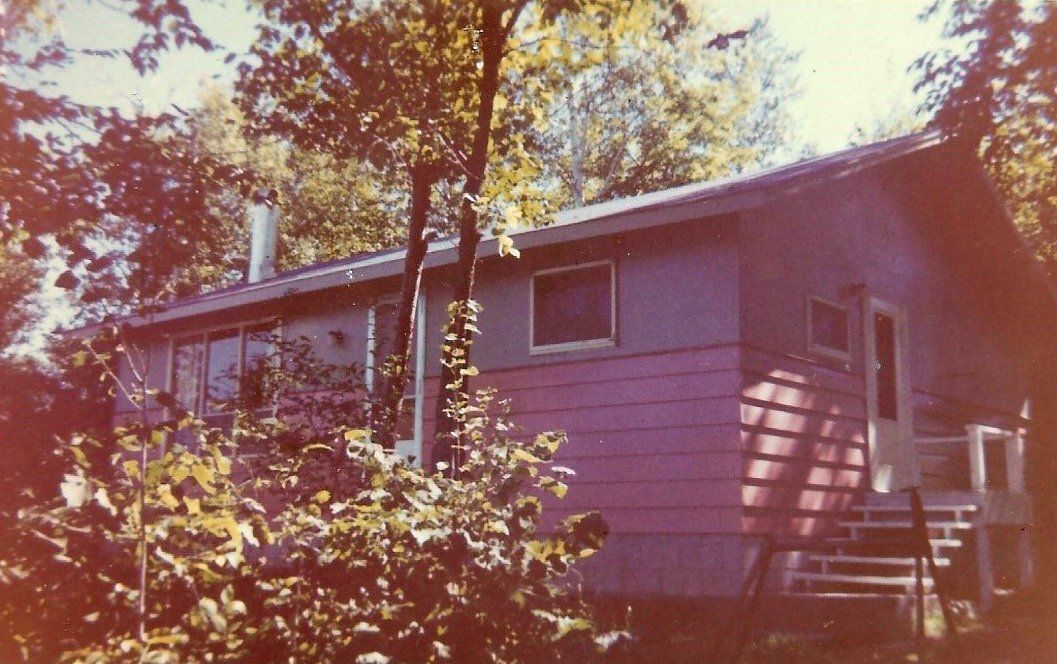
Bentwillo, the Forth family cottage on Callander Bay. A sunroom was later added to the cottage which provided additional sleeping space for grandchildren.
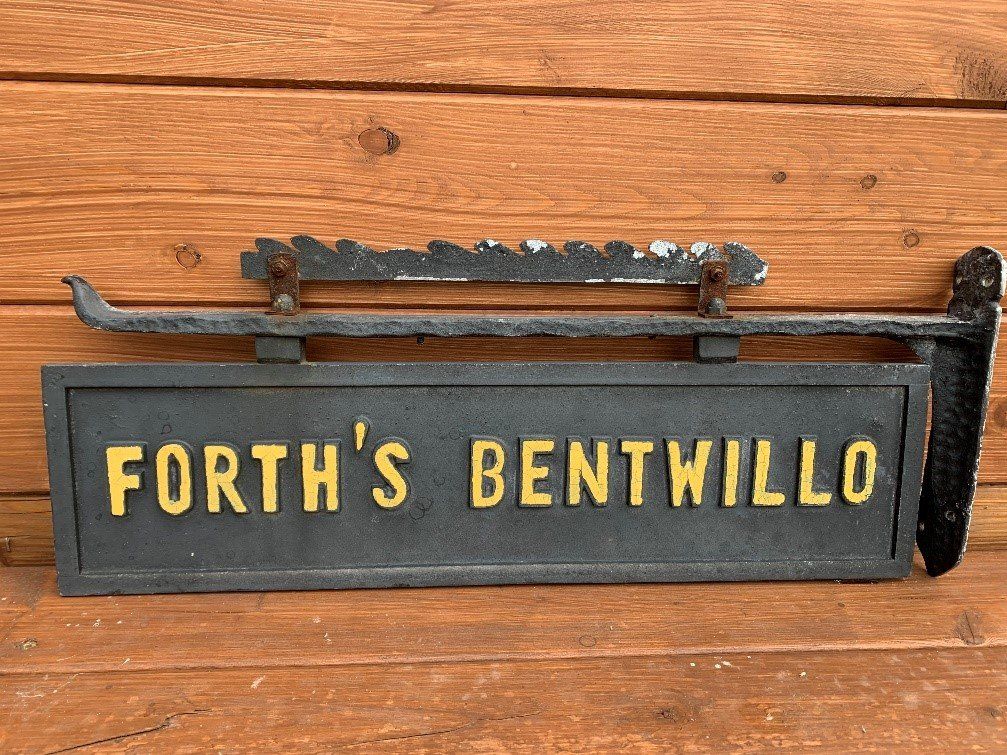
Forth’s Bentwillo sign, missing the two birds in flight that used to adorn the top edge.
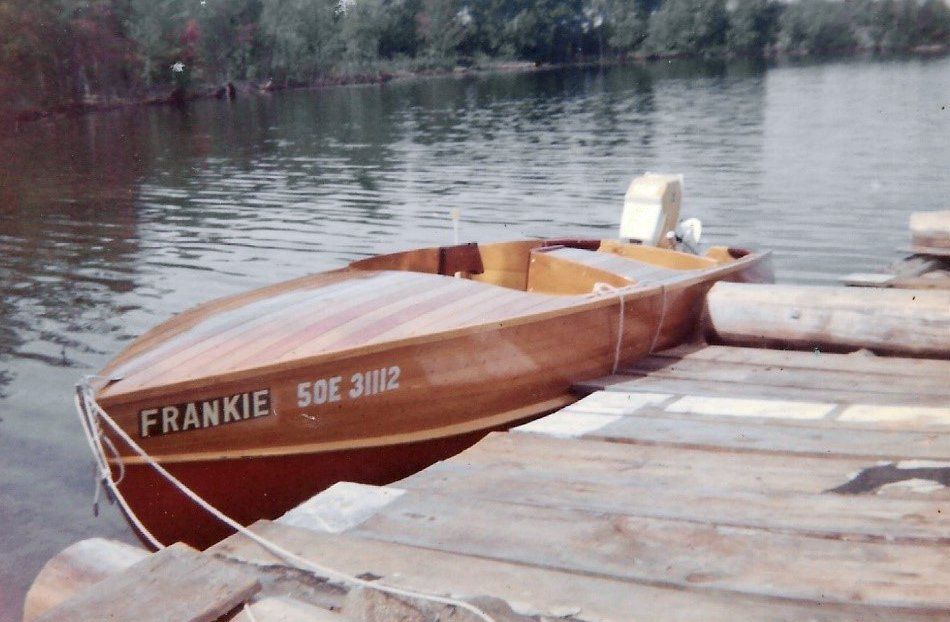
Ed and Frances Forth’s fishing boat tied up at the dock at
Bentwillo in Callander Bay.
By this time, his eldest daughter, Irene Bentley, and her family were living in California. They would drive up to Callander Bay on occasion to visit, especially when Irene’s four children, my cousins Rick, Ellen, Ron, and Emily, were young. Emily remembers Grandpa Ed teaching her how to fish, including how to clean and gut her catch. The fishing boat was affectionately named “Frankie”, the nickname of my grandmother, Frances.
Emily’s older brother, Rick, also has memories of fishing expeditions with his younger brother, Ron, at Callander Bay.
"Ron and I had a great time fishing. We would go down from the cabin to a resort (Uncle Bill’s Green Road Cottages) where they had several rowboats and we were allowed to use one. My grandpa also showed us how to catch night crawlers by wetting the yard early in the evening, then going out after dark with a flashlight and snagging them before they could go back in their holes. We couldn't stay out looking too long because the mosquitoes would carry us off.
Grandpa also took us blueberry picking with a warning about bears. With baskets full, we would go home and Grandma would bake up blueberry pie."
Rick also remembers Ed and Frances taking the whole family to Disneyland when they stayed in California.
Their second daughter, Barbara Wills, lived with her family in North Bay, and the Wills children were probably the most frequent visitors to the cottage. Their youngest daughter, Lois Long, lived in Toronto. Lois was my mother, and I have extremely fond childhood memories of the weeks we spent each summer at Bentwillo. Most of my memories do not include my grandfather as he died shortly before my third birthday. However, I do have one memory of him in his car, a huge, finned, white Chrysler with push buttons to change gears.
His granddaughter, Jennifer, remembers sitting on his knee in the rocking chair by the large window that looked out over the bay:
“Nat King Cole would be playing on the record player. My head would be resting on his belly, and I would giggle when it gurgled.”
She also remembers the games he would play with his grandchildren:
“His hands were huge. Of course, I was small. He’d bend over, extending his hand palm side up and tell me to have a seat. Then he’d lift me straight up! Best carnival ride ever! Down at the beach, we’d build sand castles and if it got too hot, he’d get us to fill our buckets with water and dump them on his head. Wouldn’t take long before we’d have full on water fights with the buckets.”
Jennifer’s older brother, Rob, recalls how Ed stuck to his routines:
“No matter the chore at Bentwillo, when the whistle blew at the sawmill across the bay at 10:15, 12:00, and 2:15, all work stopped. If the weather was hot, we had hot tea. He said it cooled you down.”
In the spring of 1965, Ed had a flu that he couldn’t seem to shake. He was eventually diagnosed with cancer, which had spread to several of his organs already and was considered untreatable at the time. He and Frances had been spending their winters in California with his daughter Irene’s family. Ed made the decision to continue with those plans. During the winter of 1965/1966 he became gravely ill. The gentle giant that was by then the family patriarch with nine grandchildren and one on the way died surrounded by family on May 7, 1966 at the age of 63 in San Jose, California, where he is buried.
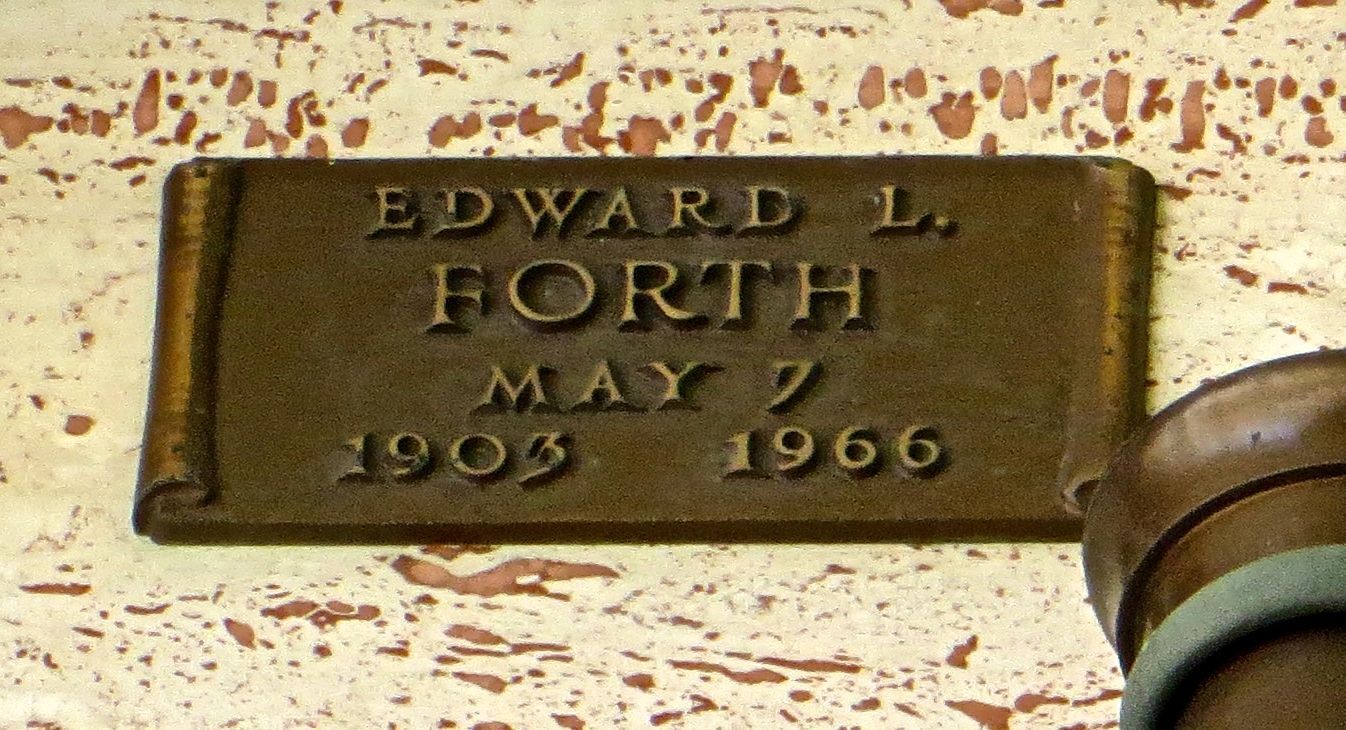
Photo by Bobbi Janes (from Find a Grave)
All photos on this page provided by Cindy Long unless otherwise indicated.
